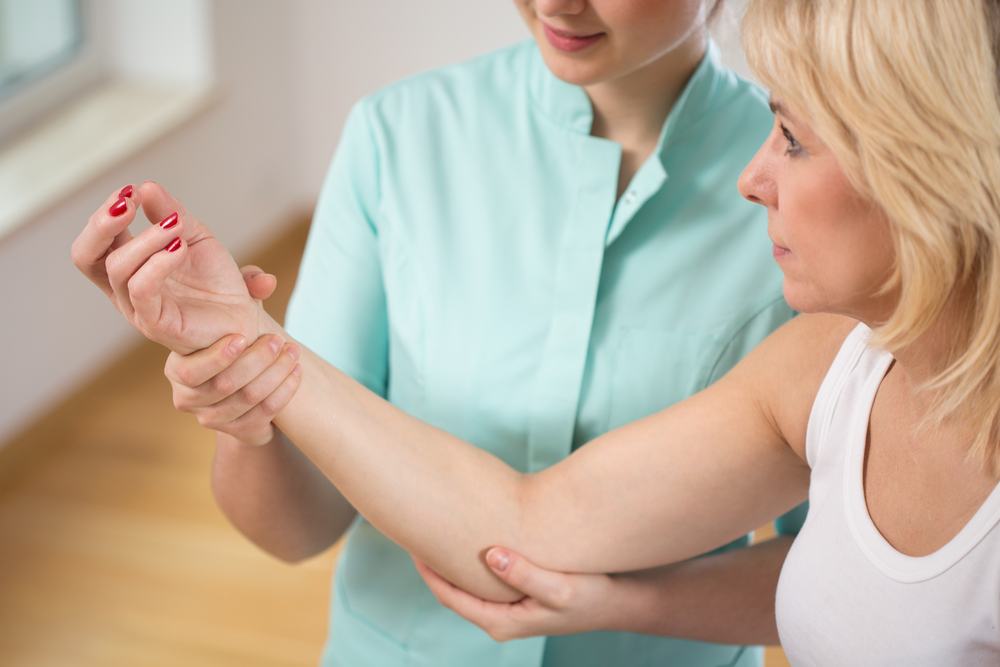Myo Wearable Sensor Captures Subtle Movement Problems in MS

An multi-sensor band worn on the arm or leg, called Myo, can capture and relay difficulties with limb movement due to multiple sclerosis (MS) with an accuracy that mirrors gold standard measures of disability, like the Expanded Disability Status Scale (EDSS), a study reports.
These findings support the device’s potential to more easily and quickly assess physical impairment in MS by detecting subtle changes in movement.
The study “Novel MS vital sign: multi-sensor captures upper and lower limb dysfunction” was published in the journal Annals of Clinical and Translational Neurology.
MS progression and clinical outcomes are usually evaluated at periodic exams. However, this approach offers only a single snapshot of the patient’s performance, and is informative only over time through continuous examinations. Tools able to evaluate less evident changes taking place at shorter intervals are needed.
“We currently lack reliable measures of subtle MS disability progression over short time intervals,” Jennifer Graves, MD, PhD, a neurologist at University of California (UC) San Diego Health and the study’s lead author, said in a press release.
“For example, a patient may tell us that that she can no longer play piano, but our 150-year-old bedside neurological exam techniques can’t quantify this. In a standard clinical trial, this patient would be rated stable and not progressing,” Graves added.
A tool able to capture disease progression — like difficulties in moving the limbs properly — “within six to 12 months instead of three to five years” could “drive faster drug development for the most disabling forms of MS,” she said.
A team led by researchers at UC San Diego evaluated whether the commercially available Myo gesture control armband, developed by Thalmic Labs, could be a robust tool to measure changes in limb function in MS patients.
A multi-sensor device, the Myo band includes an accelerometer (which measures acceleration), a gyroscope (measures orientation and angular velocity), and a surface electromygraphy (measures nerve electrical impulses). It can be used on the forearm or calf, and it connects to a computer via Wi-Fi.
“The use of multi-sensors allows for use of complementary data-types that can be employed for a more comprehensive view of the movement,” Graves said.
“The types of sensors we used are widely available … We used a product that could be purchased off Amazon, and was originally used for gaming and other gesture control tasks. The critical steps in our work involved the data processing and analyses, including use of artificial intelligence approaches” she added.
A total of 117 people with MS (mean age, 47) and 30 healthy people serving as controls (mean age, 39.7) were part of this study. Those using the Myo band were asked to complete 20 finger or foot taps, on each of their four limbs, with data downloaded to a computer.
An analysis showed that MS patients took longer to complete the taps, 1.65 seconds longer for finger tap and 1.82 seconds longer for foot taps, than did the control group.
“In multivariable regression analyses adjusting for age and sex, for every additional second to complete a tapping task, there was an associated 0.21 higher EDSS score for combined upper limbs, and 0.25 higher EDSS score for combined lower extremities,” the study reported.
Combining data from the three sensors, researchers were also able to extract the ‘texture’ of movement (shape and regularity of its signal) during tapping. This feature is associated with irregularities that can be caused by MS.
Researchers also observed that more irregular results correlated with higher scores on EDSS, a validated scale that measures degrees of disability. In particular, a parameter called “T-metric,” which was developed to evaluate texture in a single value, strongly associated with both physician- and patient-reported EDSS scores, and with the World Health Organization Disability Assessment Schedule (WHODAS) scores.
Researchers estimated that for every unit increase in the T-metric, an EDSS score was 6.08 units higher for finger taps and 5.97 higher for foot taps.
“The magnitudes of these effect sizes … are large due to the unit size of the PLS‐derived [partial least square, a calculating methodology] T‐metric … compared to the units of seconds for the time‐based metrics,” the researchers wrote. “For a clinically relevant smaller difference in the PLS‐derived T‐metric, such as a 0.2 change, the difference in physician EDSS, as an example, would be 1.2.”
Overall, the findings suggested that the Myo band is a reliable tool for measuring neurological outcomes by detecting changes in limb function.
“This device and analytical approach holds potential as a new neurological ‘vital sign’ that could be checked by nonclinical personnel in routine visits,” the researchers wrote.
“Future validation of this multi-sensor algorithm will include longitudinal study in MS patients and both cross-sectional and longitudinal studies in other neurological diseases,” they added.
The team is preparing to publish the results of a longitudinal study that suggests that Myo is sensitive enough to track changes in patients over short periods of time. Further software development, and its validation in multiple tests, will allow for greater use of the Myo device, the researchers said.
This study was funded in part by the UCSF Clinical and Translational Science Institute Resource Allocation Pilot program and Genentech.






